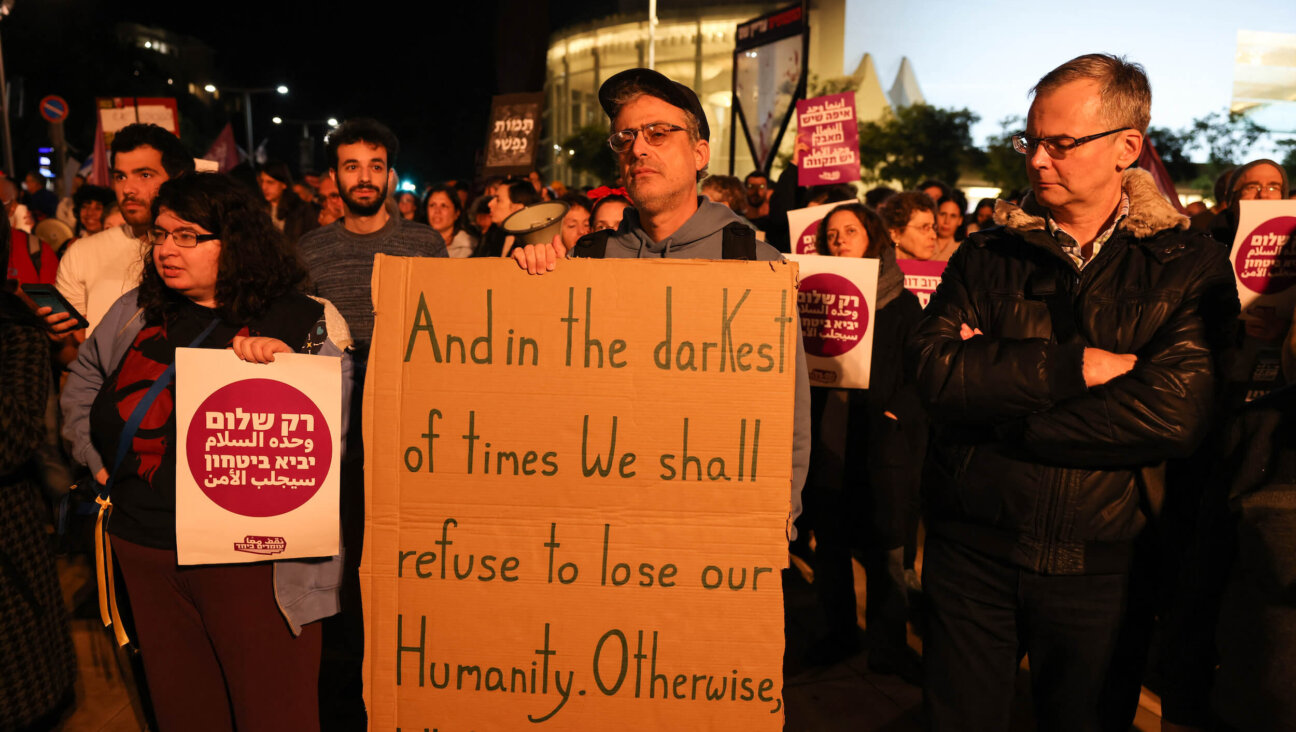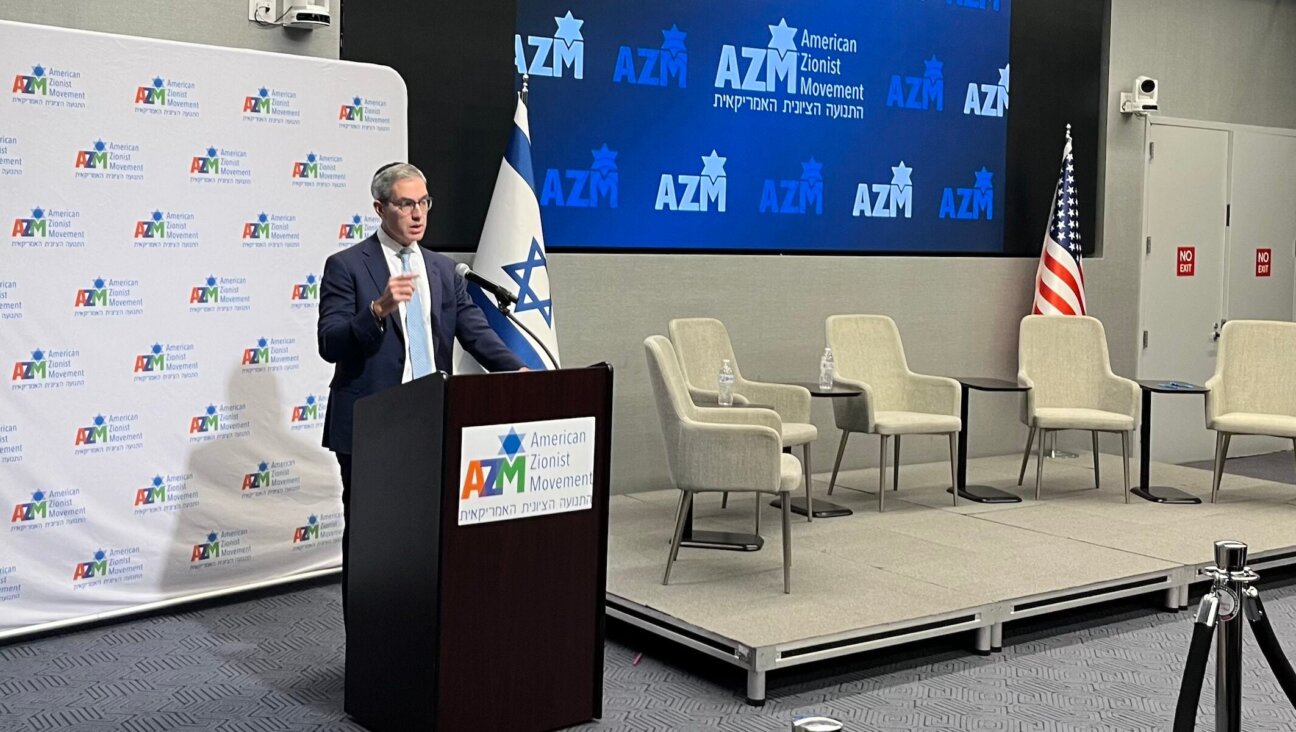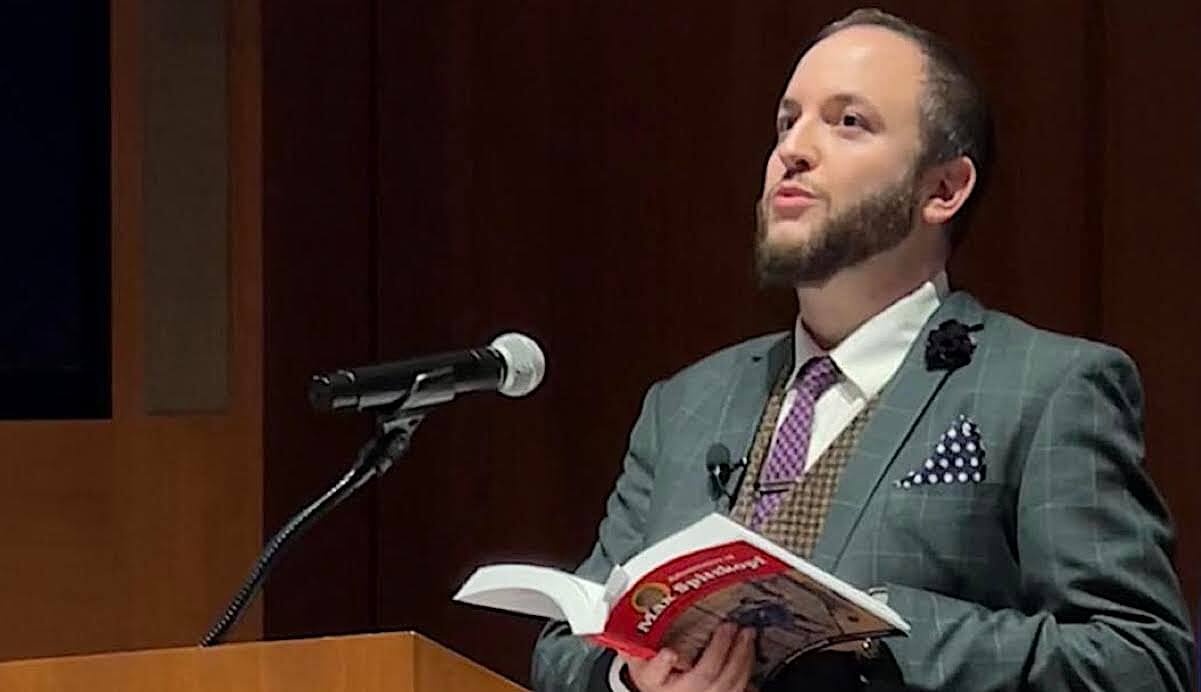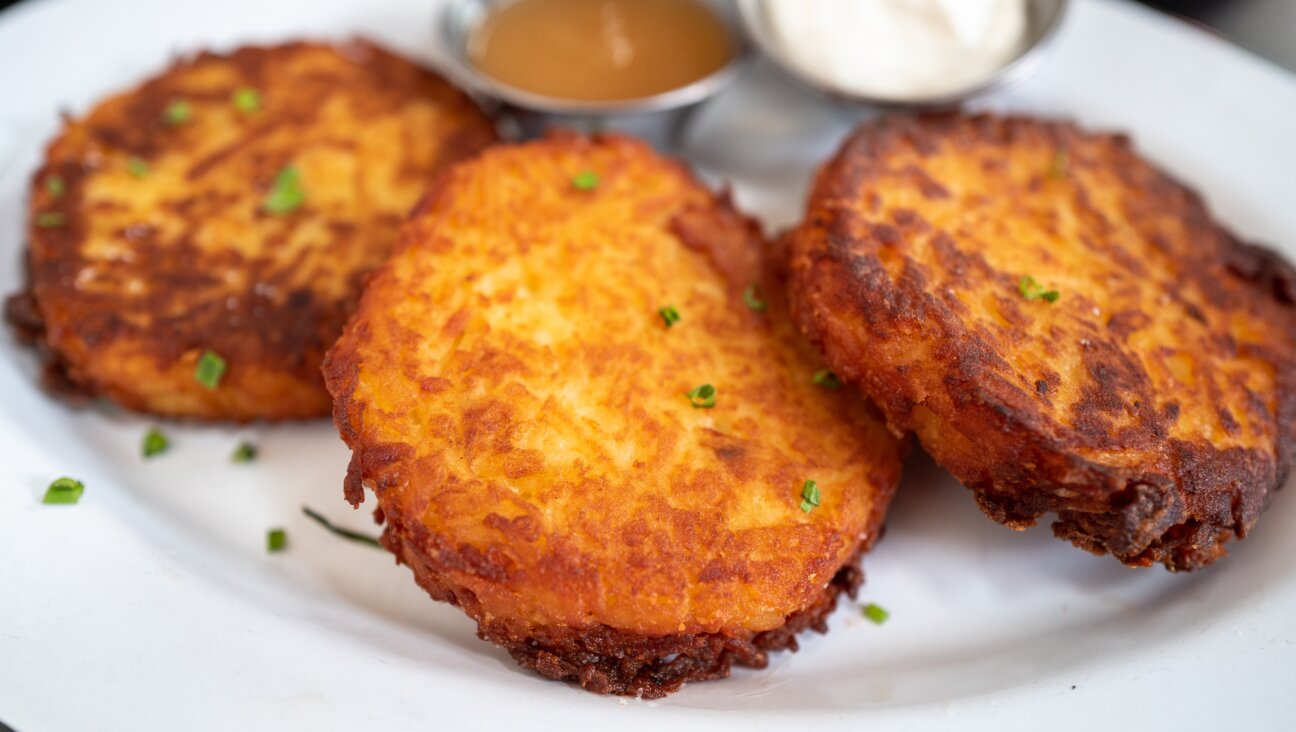For a second straight Passover, Jews mark Festival of Freedom while hostages remain in Gaza
“I think this year there is one question and one question only, which is: Why are they still there?” said Rachel Goldberg-Polin, whose son Hersh was murdered in captivity since last Passover.
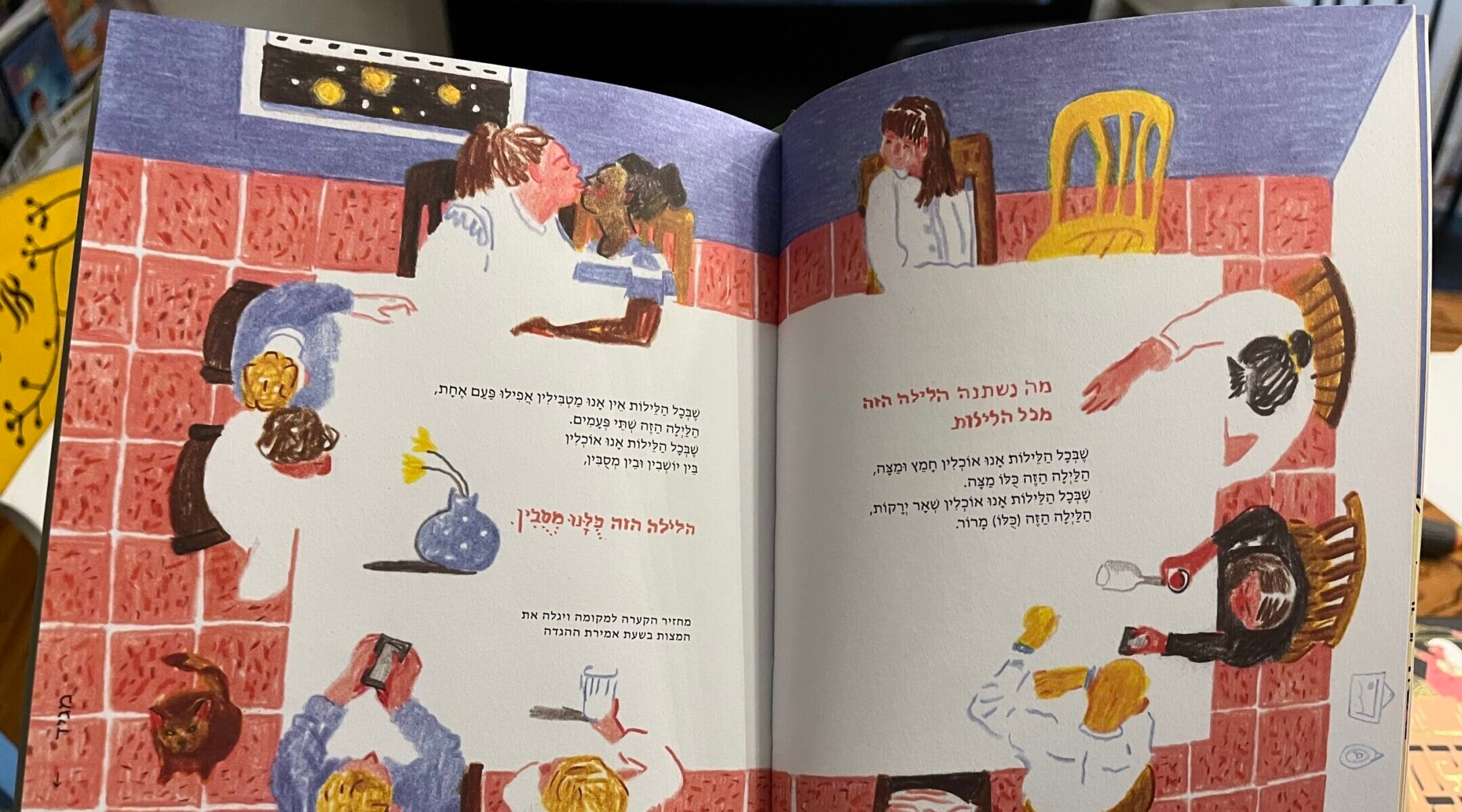
The Asufa haggadah for 2025 includes multiple images showing yellow chairs at seder tables, symbolizing the Israeli hostages who remain in Gaza. (Philissa Cramer)
(JTA) — Last Passover, Agam Berger marked the holiday in the small, dim room in Gaza where she was being held hostage. With her fellow soldier Liri Albag, she used a makeshift haggadah to recount the story of the ancient Israelites’ exodus from slavery in Egypt.
Yarden Bibas, meanwhile, reminisced from where he was being held captive about the joyful celebration his family had once enjoyed, clinging to hope that he would be reunited with his wife and children by this year’s holiday.
All three were released during a two-month ceasefire earlier this year and are marking Passover’s arrival by calling for the dozens of hostages who remain in Gaza to be freed.
“While I will celebrate this holiday with my family, it won’t yet be full,” Berger wrote in an essay published in the Wall Street Journal. “There are 59 hostages still held in Gaza, 24 of whom are believed to be alive. This is their second Passover in chains of iron. We can’t allow a third.”
Bibas returned to the devastating news that his wife and young sons had been murdered in captivity. “I am here and so thankful for this but am struggling to celebrate when I still haven’t processed what I have lost and when I know that David is still in a tunnel,” he wrote Friday on Instagram, referring to his best friend David Cunio, who remains a hostage.
The holiday arrives amid renewed fighting in Gaza and few signs of an impending deal that might result in the release of the remaining hostages. While President Donald Trump said on Thursday that negotiators were “getting closer” to such a deal, CNN reported this week that the pace of talks has slowed since Israeli officials retook the lead from U.S. officials.
Now, Jews worldwide are preparing to leave seats empty at their tables to symbolize the hostages’ plight, or share the stories of hostages during their seders, for the second straight year.
“Every abductee has a family that sits around the table on the night of the seder with tears in their eyes and a broken heart,” wrote Shir Siegel, whose father Keith was released in January, on Instagram as she encouraged others to set a place for a hostage.
“There are small things that families and friends do that will make them feel that they are not alone. And this is perhaps the greatest thing we can do for them,” she wrote, noting that her family would be setting a place for Nimrod Cohen, a soldier captured from his tank.
Cohen’s mother Viki is the illustrator behind a new children’s haggadah that incorporates symbols of individual hostages — the released, the living and the dead. It’s one of several projects meant to bring the stories of the hostages to the seder table, including a new haggadah produced by the Hostages and Missing Families Forum, the main advocacy group for hostages and their families.
A haggadah produced annually by the Israeli artists collaborative Asufa, meanwhile, does not focus on the hostages but alludes quietly to them nonetheless, with two images of seder tables showing yellow chairs like those used in Tel Aviv’s Hostages Square and beyond to symbolize the hostages.
For dozens of families who learned since last Passover that their loved ones had been killed on Oct. 7 or in captivity, this year will be the first to mark the holiday with dashed hopes.
“How can we celebrate such a holiday while 133 people are still without their freedom, still waiting to be liberated?” the grandson of one such hostage, Chaim Peri, told the Jewish Telegraphic Agency last year. In June, Peri was revealed to have died in February; he was buried in Israeli in August after his body was retrieved.
“There’s something perverse about even going through the motions of celebrating a holiday of freedom from captivity when our only son is not free and is in the worst form of captivity that any of us can imagine. It feels completely inappropriate,” Rachel Goldberg-Polin said last year. Her son Hersh was killed in captivity in August.
This year, Goldberg-Polin spoke about Passover on a podcast hosted by Dan Senor. “I think this year there is one question and one question only, which is: Why are they still there?” she said.
She alluded to a tradition practiced by some Jews to flagellate themselves with green onions at the seder to mimic the whipping endured by the ancient Israelites.
“We have actually an obligation this year to really beat ourselves up at the seder, because the whole point of Passover is it is supposed to be a commemoration of leaving the worst form of bondage and slavery that we ever experienced,” Goldberg-Polin said. “And how can we do that this year when we know that there are 59 people who are still there, 24 of whom are alive — alive and in the worst, most horrific bondage that we can picture? How?”






